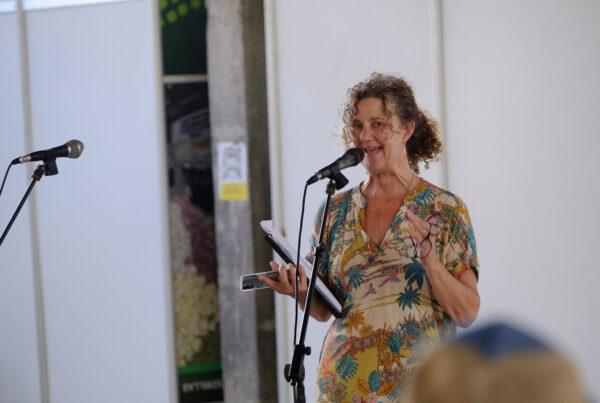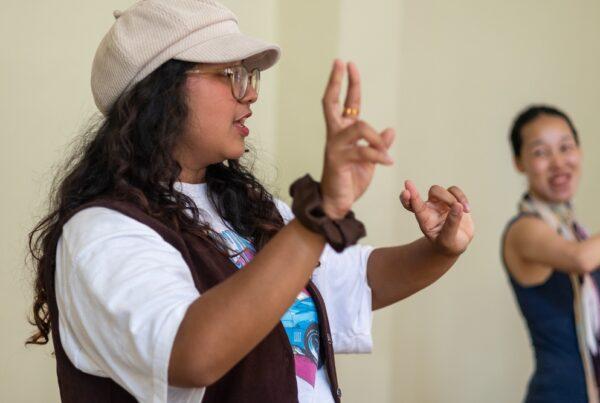A middle-aged man from Scandinavia experiences an existential crisis and resigns from his job to understand his purpose. No, this is not the synopsis of a new film by Mads Mikkelsen or Thomas Vinterberg. It is the plot of the play ‘Kurt, Quo Vadis?’ (or a literal translation of the original title: ‘I Wonder, I Wonder, How Important Am I?’), directed by Jana Maričić, based on the story of the same name by Erlend Loe and dramatised by Milena Depolo, performed by the ensemble of the ‘Boško Buha‘ Theatre, Belgrade.

Happily married father of three, Kurt from Norway, works as a forklift operator. His self-esteem takes a hit from his architect wife and their fancy doctor friends. As his biggest desire is to be famous, recognised, and an important person in his community, he quits his job and embarks on a quest to find a position that will bring him fame and applause. He decides to vacuum the entire world. However, even that doesn’t bring him the desired social validation. In the end, as a deus ex machina, the kindergarten attended by his son collapses, and the children are trapped under the rubble. Kurt sits in his excavator and rescues them. At that moment, he receives applause from the whole town and realises his worth.
In addition to Kurt and his youngest son Bud, three other actors play all the remaining roles – narrators, family members, friends, a vacuum cleaner salesman, and a fortune teller who predicts to Kurt that his next job will have something to do with dust. The actors skilfully transform from role to role, changing their acting style when interpreting different characters. What all the characters have in common is exaggeration. Gestures are often either exaggerated or minimalistic, and speech is either too slow or too fast, when something is big, it’s enormous, and when it’s small, it’s almost invisible.

The set design is made of wood, and as the director explained in the Q&A session, she chose a cubic and circular set painted in three primary colours to evoke Norwegian minimalism, akin to Ikea. Additionally, she wanted to demonstrate that the set design for children’s plays doesn’t need to be grandiose to hold the audience’s attention, which is often a misconception prevalent among creators for children.
When asked in the Q&A why the setting remained in Norway during the process of dramatisation, rather than being moved to Serbia, the director and actors pointed out two factors. The first is that, if the story were to take place in Serbia or the Balkans, Kurt’s dissatisfaction might be interpreted as a financial problem rather than an existential one. Context: Forklift operators in the Balkans have extremely low salaries. The second reason is that they found it more convincing that challenging patriarchal norms – a man quitting his job due to a spiritual crisis, would be easier portrayed in Norway than in the local environment.
In the context of institutional theatre for children in Serbia and the ‘Boško Buha’ Theatre, this play was a turning point. Before this play was staged, five years ago, the theatre produced performances based on fairy tales, well-known titles of children’s novels that attract audiences, plays with lots of songs and choreography. ‘Kurt, Quo Vadis?’ shifted the repertoire towards chamber plays based on less-known works for children. Also, it is very uncommon that plays for children have a grown up person as a protagonist so we must recognise the bravery it took for this story to be staged.
Children’s Impressions:

I liked the jokes! I love to laugh in the theatre. (Girl, 9)
It was so funny how they talked. They didn’t talk like we do. They talked like this /starts imitating acting style of the Doctor from the play/ (Boy, 8)
I don’t want to say anything, but I liked the play so much! It was so easy to follow the story. The plot was like… like… a river flow. (Boy, 7)
I liked the whistle Bud [Aleksandar Miljković] was using. Everything Bud did on the stage was hilarious. (Girl, 9)
I understood that all jobs are important. I still don’t know what I want to be when I grow up. I have several, no, three ideas. And also, we learn from the play that we are all equally worthy. (Girl, 11)
I liked /biggest imaginable pause/ everything. (Boy, almost 4)

Divna Stojanov is a dramaturg and playwright. She also writes theatre reviews.





